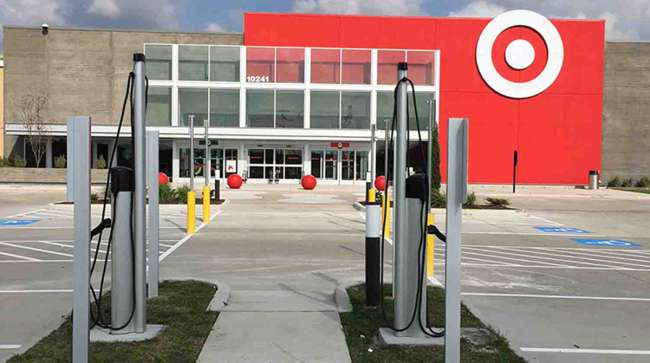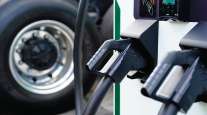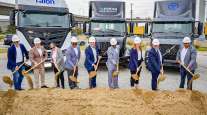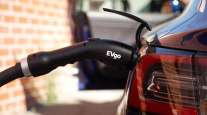Retailers Helped Fuel an EV Charging Station Blitz

[Stay on top of transportation news: Get TTNews in your inbox.]
U.S. electric vehicles got a record 766 new high-speed charging stations to plug into in the fourth quarter. The uptick is being driven by retailers rushing to cash in on a growing wave of drivers who are less likely to juice up in a private driveway or garage.
The infrastructure blitz represents an 8% increase from the prior quarter in places to quickly fuel an EV, according to a Bloomberg Green analysis of Department of Energy data. The total number of U.S. charging stations now sits around 10,200; that’s roughly one electron depot for every 12 gas stations in the country.
“The installation is continuing on an upward trajectory similar to EV sales,” said Katherine Garcia, director of the Clean Transportation For All campaign at the Sierra Club. “And it’s clear that the businesses that are putting in chargers are seeing the benefits.”
Charging stations are spreading across rural America, far from the coasts, and the final three months of 2024 were no exception. In the crowd of EV stations switched on in the fourth quarter, 19 are in Alabama, 33 are in Ohio, 25 are in Oklahoma and 74 are in Texas.
Our Pilot Travel Center in London, Ohio, is the nation's first EV fast charging station built as part of the National Electric Vehicle Infrastructure program! We celebrated the grand opening with Ohio @GovMikeDeWine, @ODOT_Statewide, Director Jack Marchbanks, @GM and @evgonetwork pic.twitter.com/GW3y9gXXzK — Pilot Flying J (@PilotFlyingJ) December 14, 2023
EV pilots can now top up a few blocks from the Corn Palace in Mitchell, S.D., and find electrons in the heart of Wyoming coal country. The Amish Country Store in Lamoni, Iowa, now fills up thirsty batteries and EV nomads have a new electron flag on the map in Random Lake, Wis.
Many new charging cords have sprouted at Wawa Inc. convenience stores and Pilot Co. travel centers. Some 33 new stations switched on outside of Target Corp. stores in the final three months of the year and another handful each at Costco Wholesale Corp. centers and Buc-ee’s Ltd. convenience stores.
In partnership with Electric Era, Costco has started deploying their own DC fast chargers, after installing a pair at a new store in Ridgefield, Washington. #evchargingstations #stateofcharge #costcohttps://t.co/6JYiC8f5dG — EV Charging Stations (@EVChargStations) October 28, 2024
As chargers pop up in more conspicuous places, Garcia says a kind of consumer flywheel effect kicks in: Drivers notice more charging, which increases their confidence in the technology and makes them more likely to buy an EV. “It really is a new moment,” she explained.
While the pace of EV sales gains slowed for a beat at the start of 2024, U.S. drivers are once again scrambling for battery-powered models. Drawn in part by a parade of newer, more affordable machines, Americans bought nearly 366,000 fully electric vehicles in the final quarter of 2024, a 15.2% increase over the year-earlier quarter, according to Cox Automotive Inc.
What’s more, recent buyers are far less likely to live in single-family homes, according to the National Renewable Energy Laboratory, and thus, less likely to have a private driveway or garage for charging.
“Putting chargers where people are already going to be” is “undervalued” but increasingly important, said Alexia Melendez Martineau, senior policy manager at Plug In America, a nonprofit EV advocacy group.
Want more news? Listen to today's daily briefing above or go here for more info
The infrastructure blitz was helped, in part, by the Biden administration’s National Electric Vehicle Infrastructure Formula program, a $5 billion plan to fill in the remaining gaps in the charging map. Still, the lion’s share of the construction has happened without incentives. By late November, only 31 NEVI stations across nine states had been switched on.
The Trump administration has pledged to slash EV incentives but the NEVI rollout is further along than it may appear. Some 41 states have issued solicitations to construct charging infrastructure and 35 have agreements in place.




